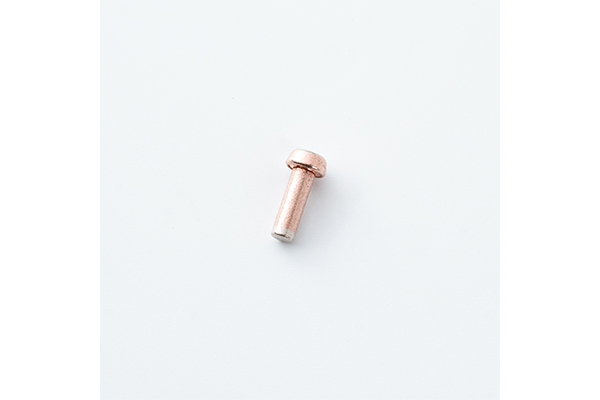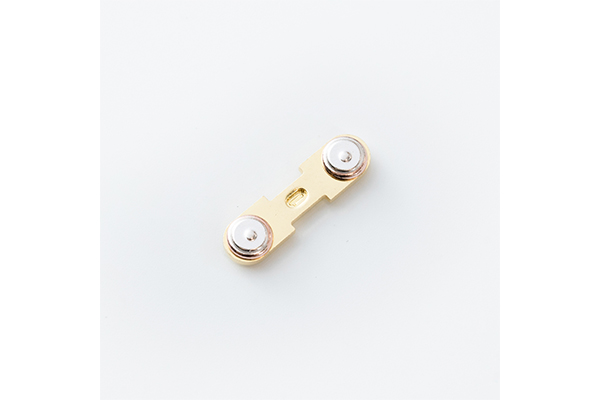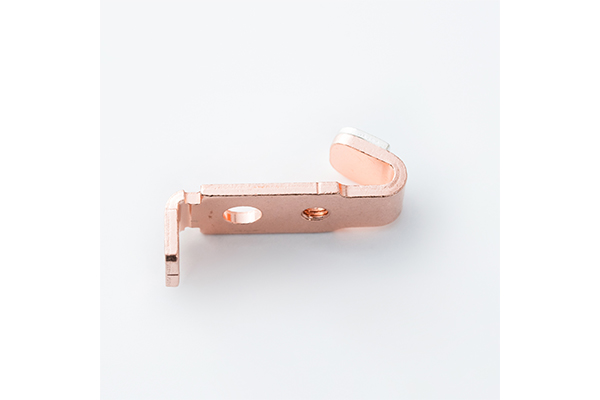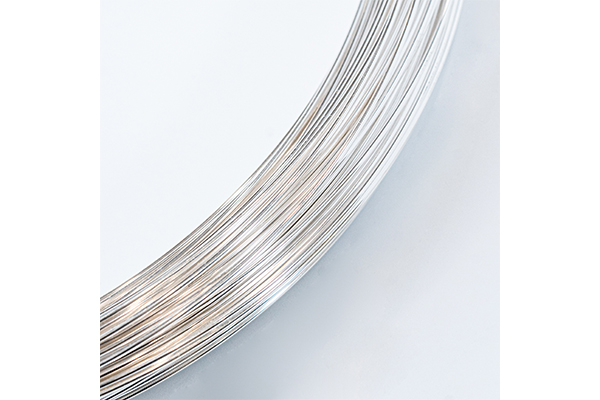What role does the conductivity of riveting components play in electronic devices?
Release Time : 2025-07-15
In the precision world of industrial manufacturing, riveting components are not ostentatious, but they play a key role in connection and support. Unlike bolts, they do not need to be disassembled frequently, nor do they leave obvious marks like welding. Instead, they firmly combine metal with metal and structure with structure in a quiet and firm way, becoming an indispensable "invisible bond" in countless mechanical equipment, vehicles, and building components.
Riveting components stand out for their excellent conductivity and strong stability. Not only does it perform well in mechanical connection, but it also shows extraordinary performance in the field of electrical conduction. It is widely used in electronic equipment, new energy vehicles, rail transportation and other scenes with extremely high requirements for conduction. Its interior is made of high-quality materials and processed by advanced processes to ensure that every connection is unbreakable. At the same time, it has good fatigue and corrosion resistance, and can maintain stable operation even in high temperature, high humidity or vibration environments.
From the appearance, riveting components present a unique industrial beauty. Its surface is smooth and delicate, without any scratches or burrs, and the edge processing is precise, presenting a sense of refinement close to that of a work of art. Although it is small in size, it exudes a calm and professional temperament. It is not as cold and hard as traditional metal parts, but has a warm touch after being polished, as if it is a tacit handshake between industrial manufacturing and design aesthetics.
Interestingly, riveting components are not just a functional part, it also reflects the wisdom of modern manufacturing in details. For example, its structural design fully considers the requirements of environmental certification, adopts green materials such as lead-free, cadmium-free, and halogen-free, and complies with multiple international environmental standards such as RoHS and REACH, truly achieving "performance and environmental protection". It not only serves the product itself, but also serves the sustainable development of the earth.
What is even more surprising is that the advanced processes it adopts, such as cold forging, hot forging, precision stamping, etc., enable each riveting component to maintain consistent quality under high-intensity use. This high degree of process consistency allows it to perform well on automated assembly lines, improve overall production efficiency, and reduce rework and waste caused by part defects.
In terms of application scenarios, riveting components are active in multiple industries. Whether it is the body connection in automobile manufacturing, or the circuit board fixation in electronic equipment; whether it is the splicing of carriage structures in rail transit, or the metal connection of building curtain walls, it can complete its mission in a stable, safe and efficient way. It is not only the crystallization of technology, but also the embodiment of engineering aesthetics.
In addition, with the in-depth promotion of intelligent manufacturing and green manufacturing concepts, riveting components have also begun to develop in the direction of lightweight, modular and recyclable. Some products support quick disassembly and reuse, further enhancing their dual value in environmental protection and economy.
It can be said that although riveting components are small, they carry important connection tasks from large vehicles to small circuit boards. It uses stable performance to protect the reliability of each connection, and also interprets another beauty of industrial products with advanced technology. In this era of pursuing efficiency, safety and sustainable development, it is quietly driving the manufacturing industry forward in a unique way.
Riveting components stand out for their excellent conductivity and strong stability. Not only does it perform well in mechanical connection, but it also shows extraordinary performance in the field of electrical conduction. It is widely used in electronic equipment, new energy vehicles, rail transportation and other scenes with extremely high requirements for conduction. Its interior is made of high-quality materials and processed by advanced processes to ensure that every connection is unbreakable. At the same time, it has good fatigue and corrosion resistance, and can maintain stable operation even in high temperature, high humidity or vibration environments.
From the appearance, riveting components present a unique industrial beauty. Its surface is smooth and delicate, without any scratches or burrs, and the edge processing is precise, presenting a sense of refinement close to that of a work of art. Although it is small in size, it exudes a calm and professional temperament. It is not as cold and hard as traditional metal parts, but has a warm touch after being polished, as if it is a tacit handshake between industrial manufacturing and design aesthetics.
Interestingly, riveting components are not just a functional part, it also reflects the wisdom of modern manufacturing in details. For example, its structural design fully considers the requirements of environmental certification, adopts green materials such as lead-free, cadmium-free, and halogen-free, and complies with multiple international environmental standards such as RoHS and REACH, truly achieving "performance and environmental protection". It not only serves the product itself, but also serves the sustainable development of the earth.
What is even more surprising is that the advanced processes it adopts, such as cold forging, hot forging, precision stamping, etc., enable each riveting component to maintain consistent quality under high-intensity use. This high degree of process consistency allows it to perform well on automated assembly lines, improve overall production efficiency, and reduce rework and waste caused by part defects.
In terms of application scenarios, riveting components are active in multiple industries. Whether it is the body connection in automobile manufacturing, or the circuit board fixation in electronic equipment; whether it is the splicing of carriage structures in rail transit, or the metal connection of building curtain walls, it can complete its mission in a stable, safe and efficient way. It is not only the crystallization of technology, but also the embodiment of engineering aesthetics.
In addition, with the in-depth promotion of intelligent manufacturing and green manufacturing concepts, riveting components have also begun to develop in the direction of lightweight, modular and recyclable. Some products support quick disassembly and reuse, further enhancing their dual value in environmental protection and economy.
It can be said that although riveting components are small, they carry important connection tasks from large vehicles to small circuit boards. It uses stable performance to protect the reliability of each connection, and also interprets another beauty of industrial products with advanced technology. In this era of pursuing efficiency, safety and sustainable development, it is quietly driving the manufacturing industry forward in a unique way.







